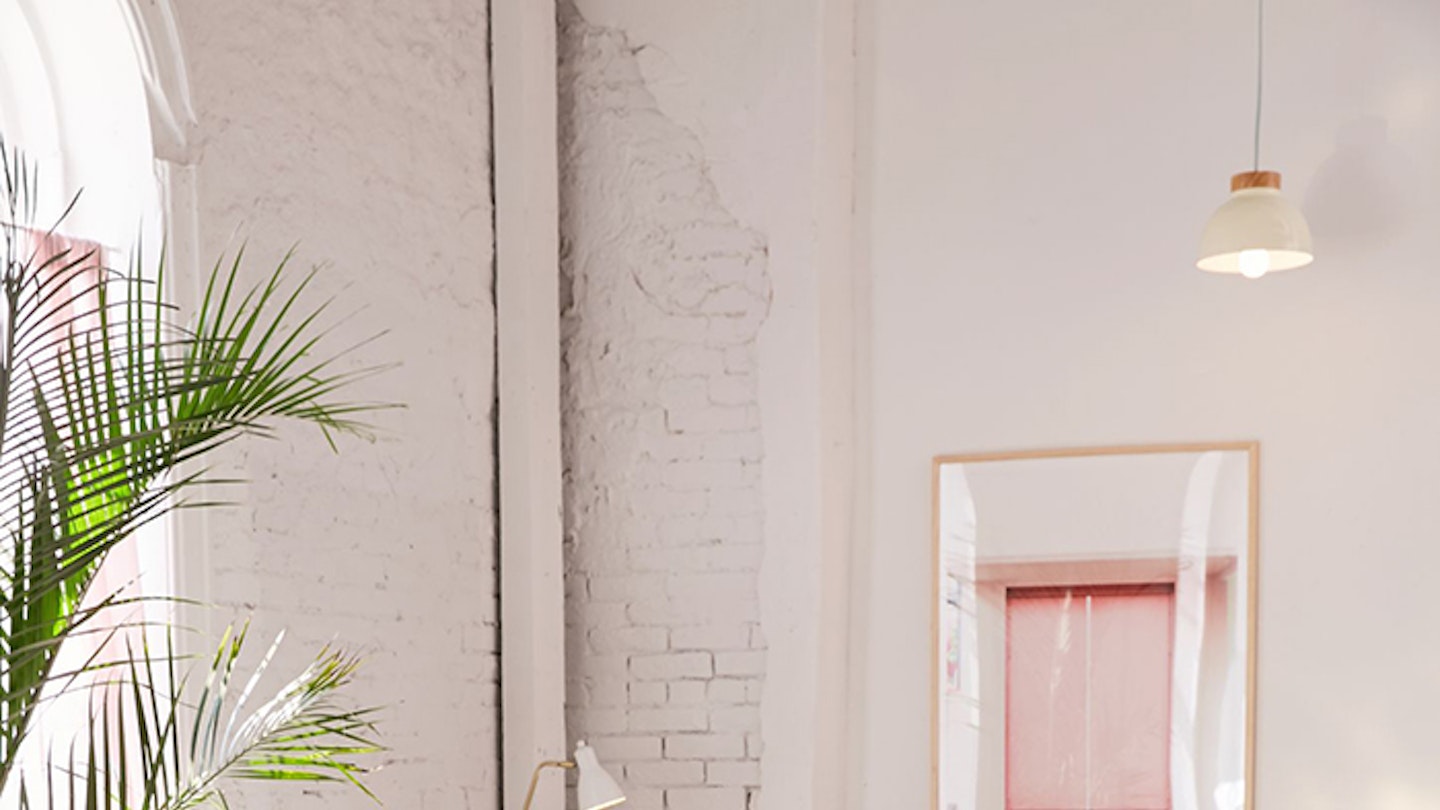So, you want to give your tired-looking furniture a new lease of life. Or perhaps you’ve found the perfect fabric, and want to put it to good use. Reupholstering is a brilliant way to make old homeware look brand new, and while it's possible to hand over your furniture to the experts, taking a DIY approach is becoming more and more popular.
'Jumping straight into reupholstering a huge Chesterfield sofa may seem appealing, but it's important to start with the basics,' explains Lucy Penfold, owner of Boughtwood Restoration, an upholstery and furniture restoration business based in the South-West of England. Instead, she recommends starting smaller, with 'something like a drop-in dining chair seat, a foot stool, or a flat headboard.'
Upholstery tools: what you'll need
You'll need to invest in the correct kit before getting stuck into a project. Lucy recommends:
-
A good staple gun (ideally an electric one)
-
Scissors for fabric
-
A tape measure
-
A serrated knife (an old serrated kitchen knife is perfect)
-
A staple or tack remover
-
A hammer
-
Upholstery foam (if you need to replace the filling of an old seat)
-
Your upholstery-weight fabric of choice (plain fabric is simplest)
-
Wadding (which sits between the foam and the outer fabric)
-
Cloth for the underside of the furniture
NOW READ: 13 Pastel Living Room Ideas You'll Want To Recreate
Pastel Living Rooms - Grazia
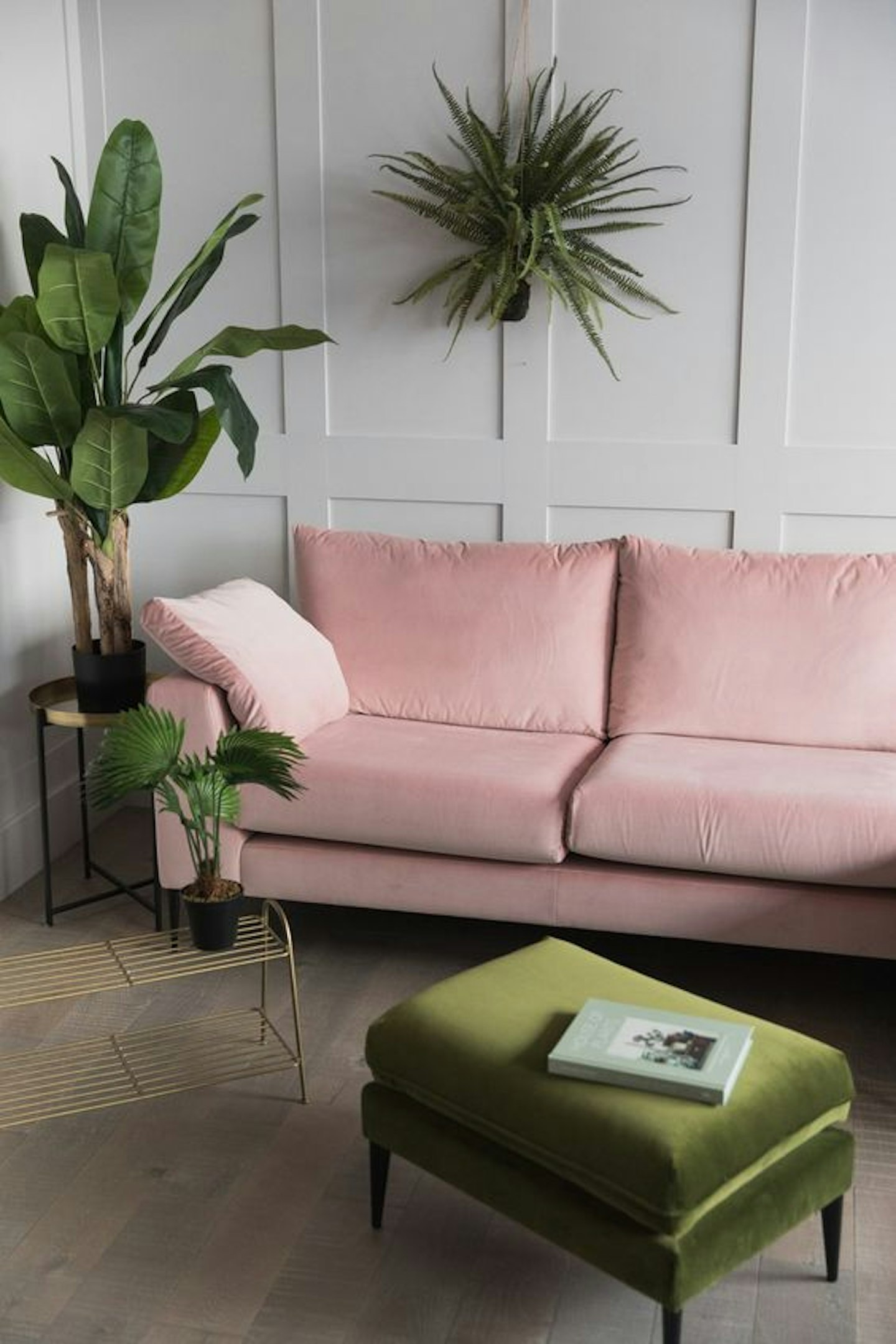 1 of 13
1 of 13pastel living room interiors inspiration
We're never sure exactly which colours the old adage refers to, but this set up proves that pink and green should definitely be seen together.
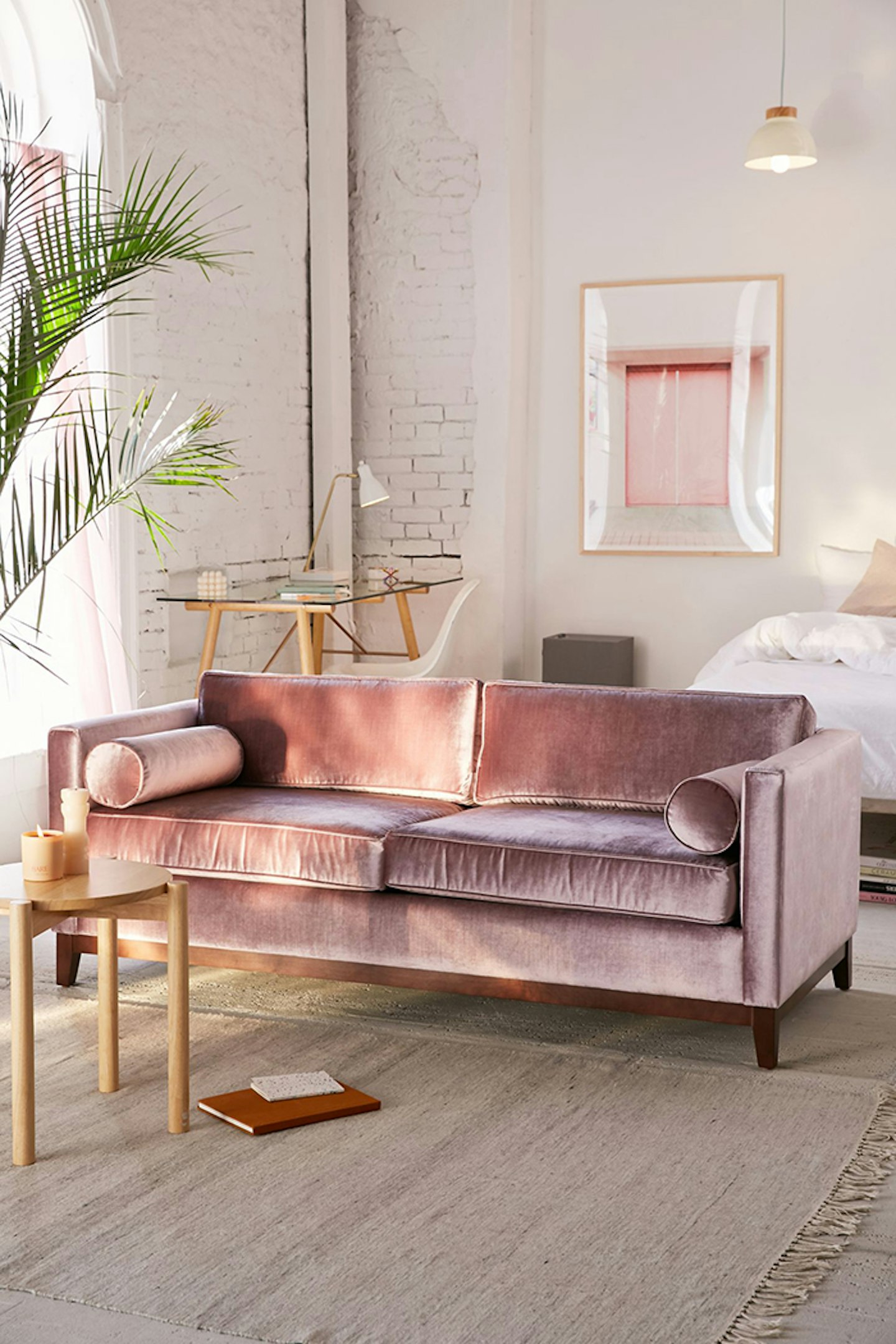 2 of 13
2 of 13pastel living room interiors inspiration
When did the pink velvet sofa become an interiors must have? We're not sure; we just know we need one ASAP.
 3 of 13
3 of 13pastel living room interiors inspiration
Pair two pastel shades together and the effect is unexpectedly maximalist (without leaving you with a headache).
 4 of 13
4 of 13pastel living room interiors inspiration
Forget magnolia, a lick of pale blue paint can help smaller rooms feel light and airy (plus, here's proof that it makes a very Instagram friendly backdrop for botanicals)
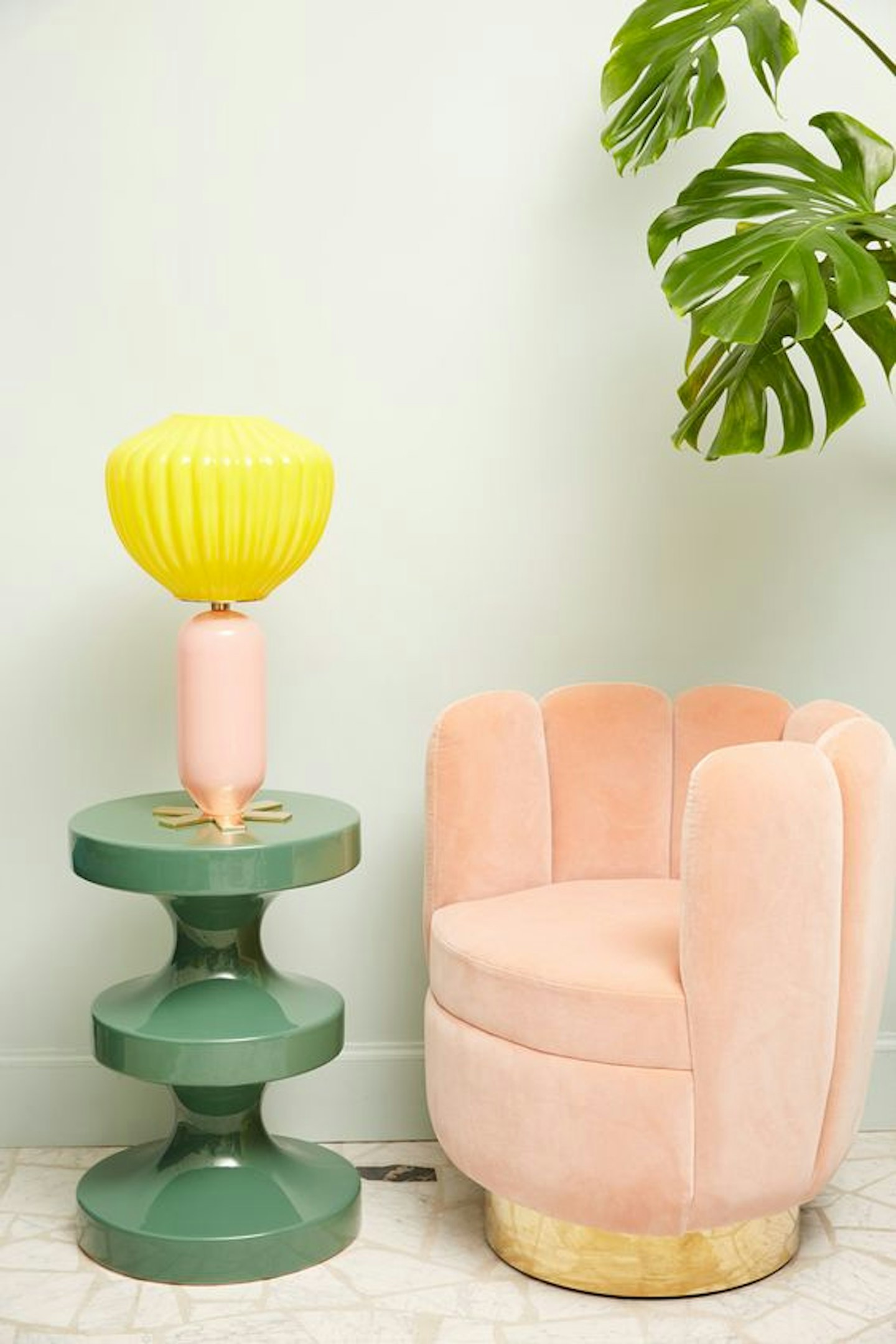 5 of 13
5 of 13pastel living room interiors inspiration
Time to add a pastel-hued scallop seat to the top of your interiors wishlist.
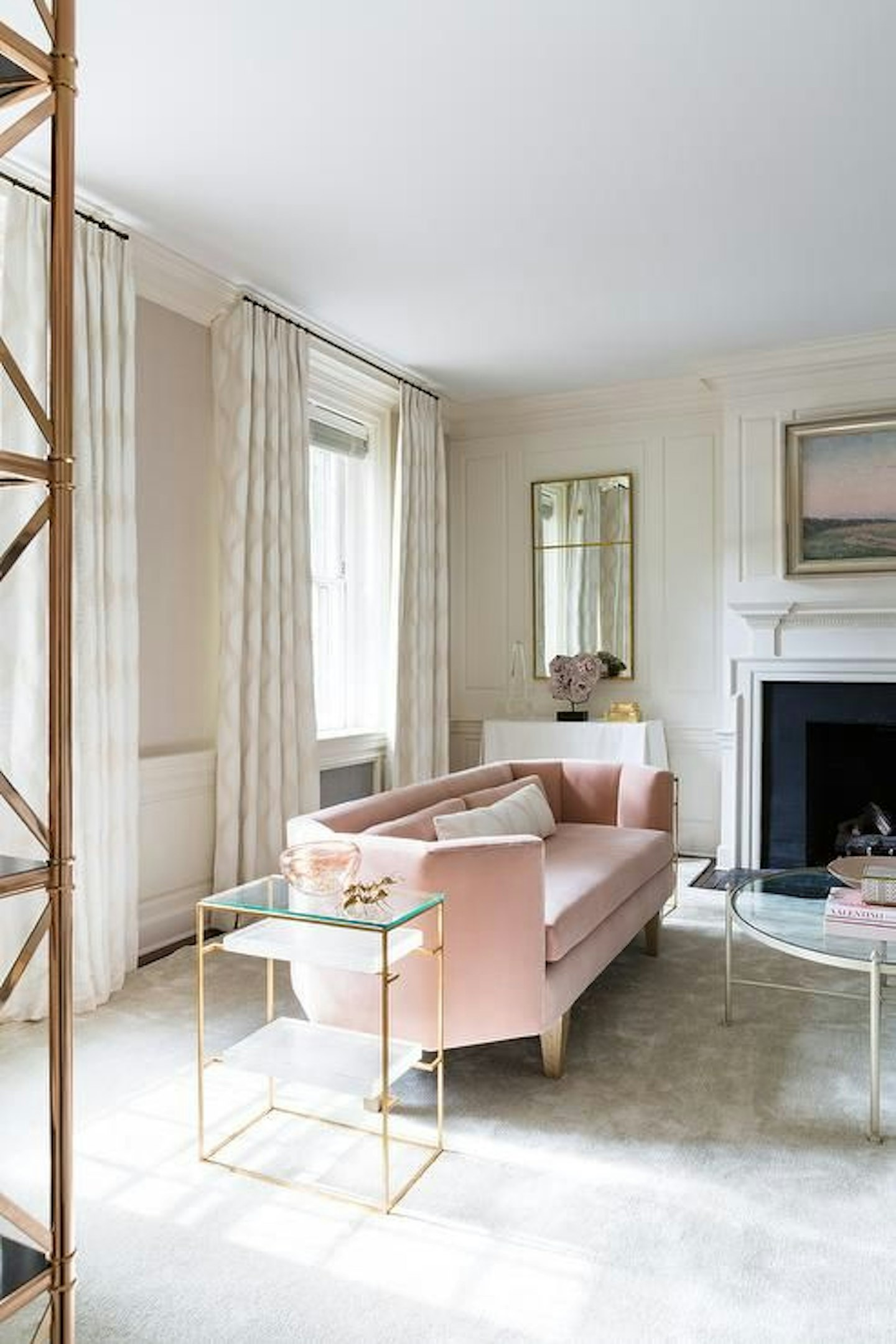 6 of 13
6 of 13pastel living room interiors inspiration
Shop around for accent accessories or prints in colours that subtly echo that of your statement piece of furniture.
 7 of 13
7 of 13pastel living room interiors inspiration
This cornflower shade makes a striking backdrop for a gallery wall, with pastel blue accents popping up in the picture selection, too.
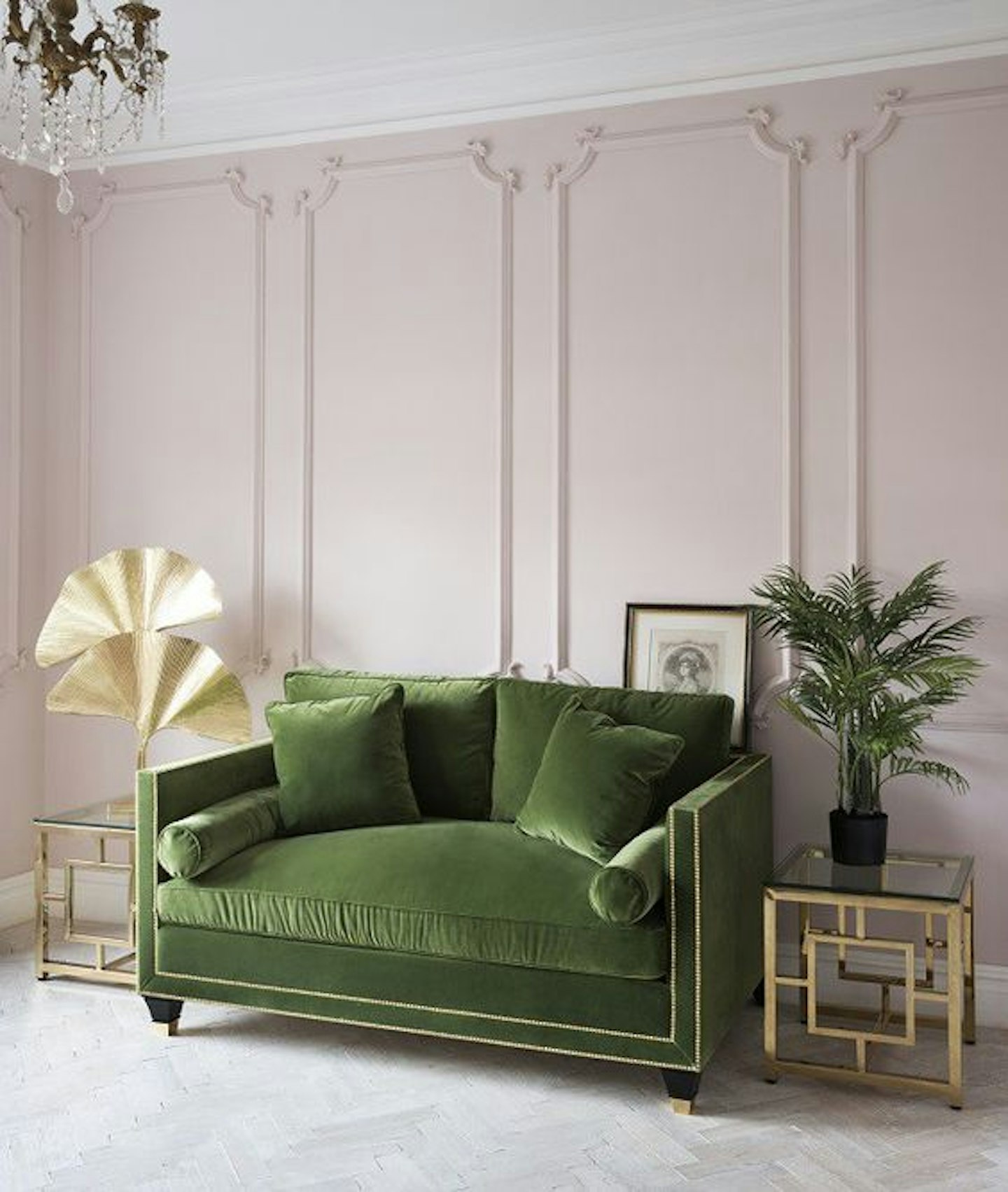 8 of 13
8 of 13pastel living room interiors inspiration
Yet more proof that pink and green is the dreamiest of colour combinations. Here, a pale backdrop keeps the deep olive sofa from feeling too heavy or old fashioned.
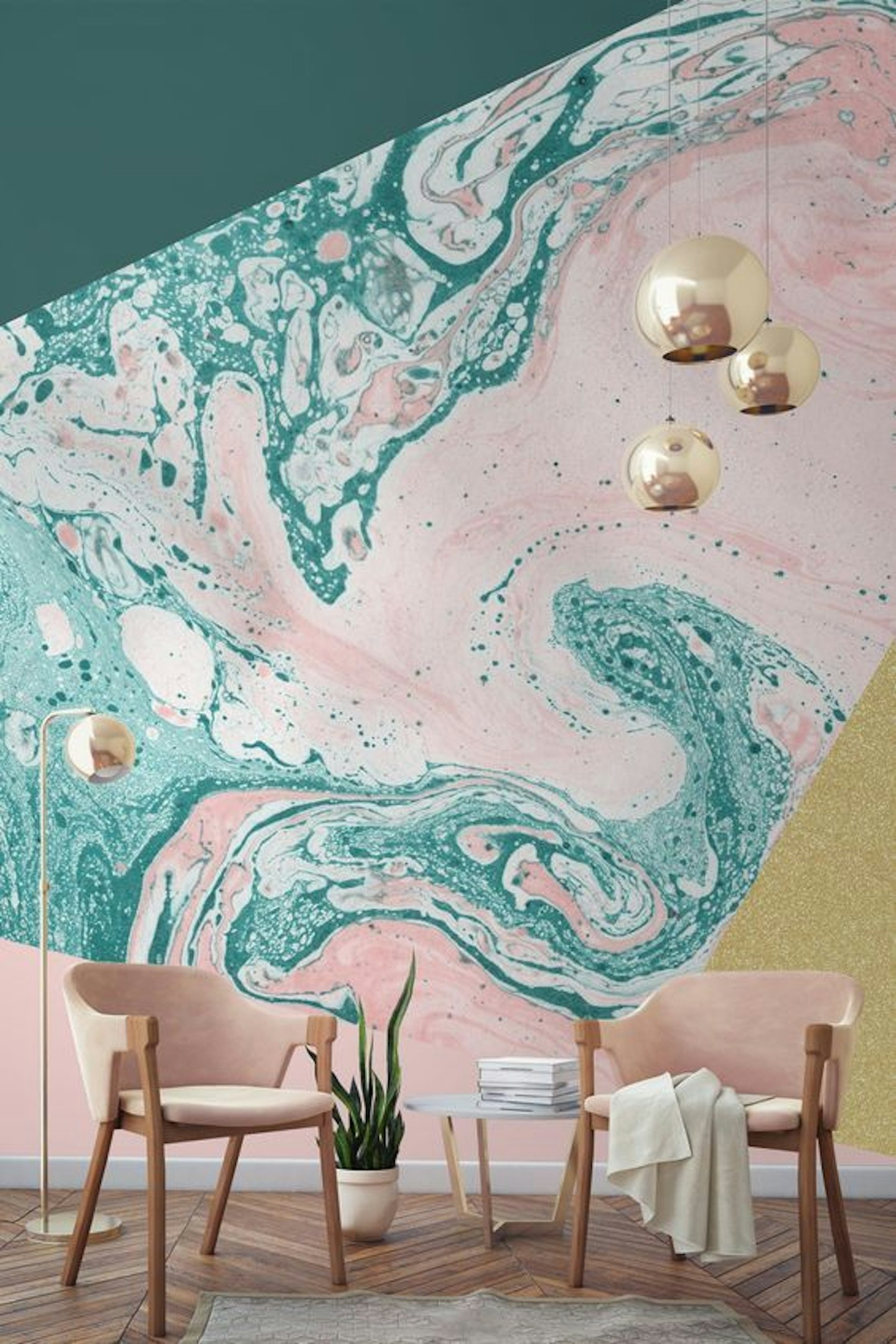 9 of 13
9 of 13pastel living room interiors inspiration
Balance out a dramatic print (like this statement-making marbled wallpaper) with simple, clean lines for furniture and lighting.
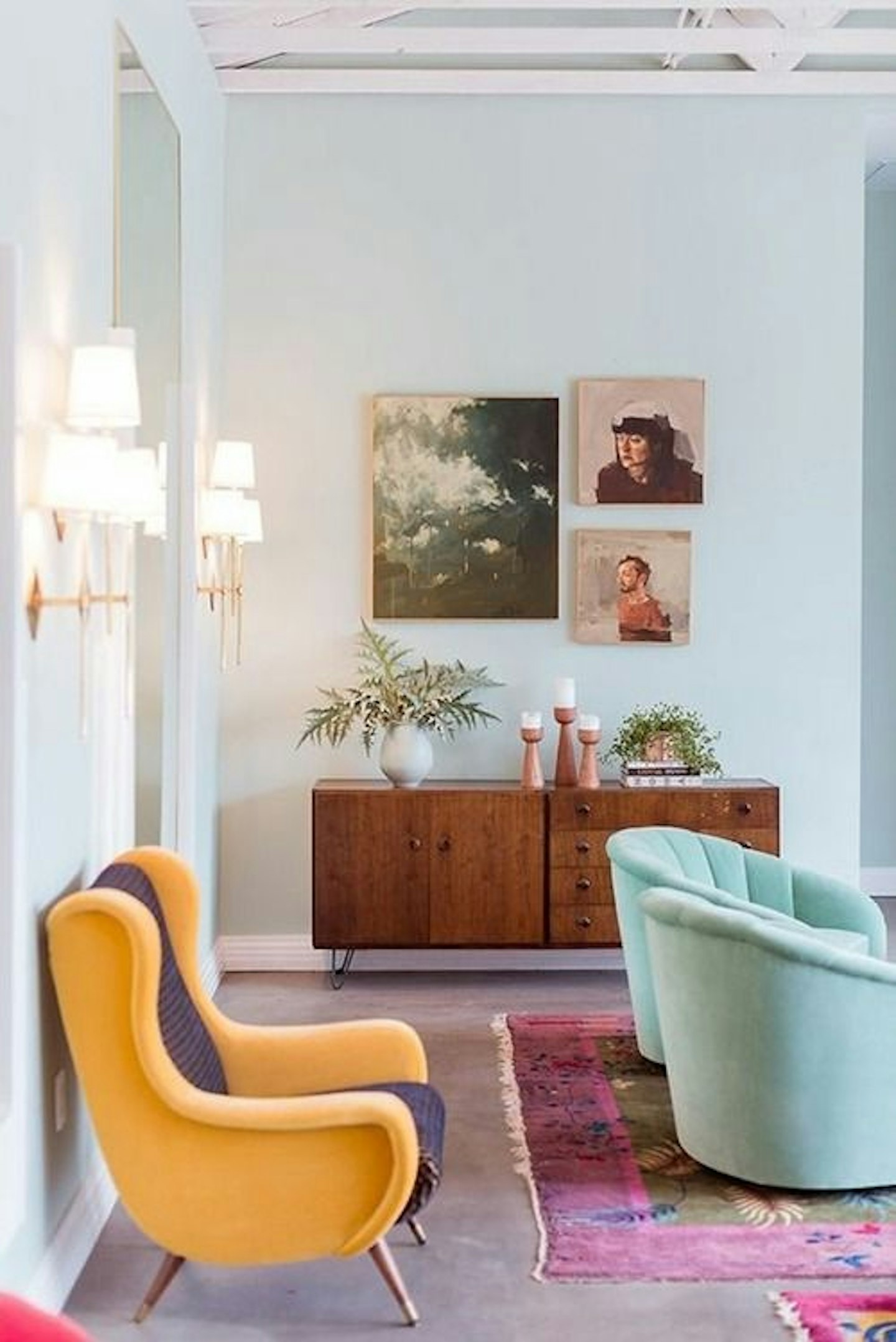 10 of 13
10 of 13pastel living room interiors inspiration
As great as pastel on pastel looks, don't be afraid of pairing lighter shades with bolder pieces like this yellow chair.
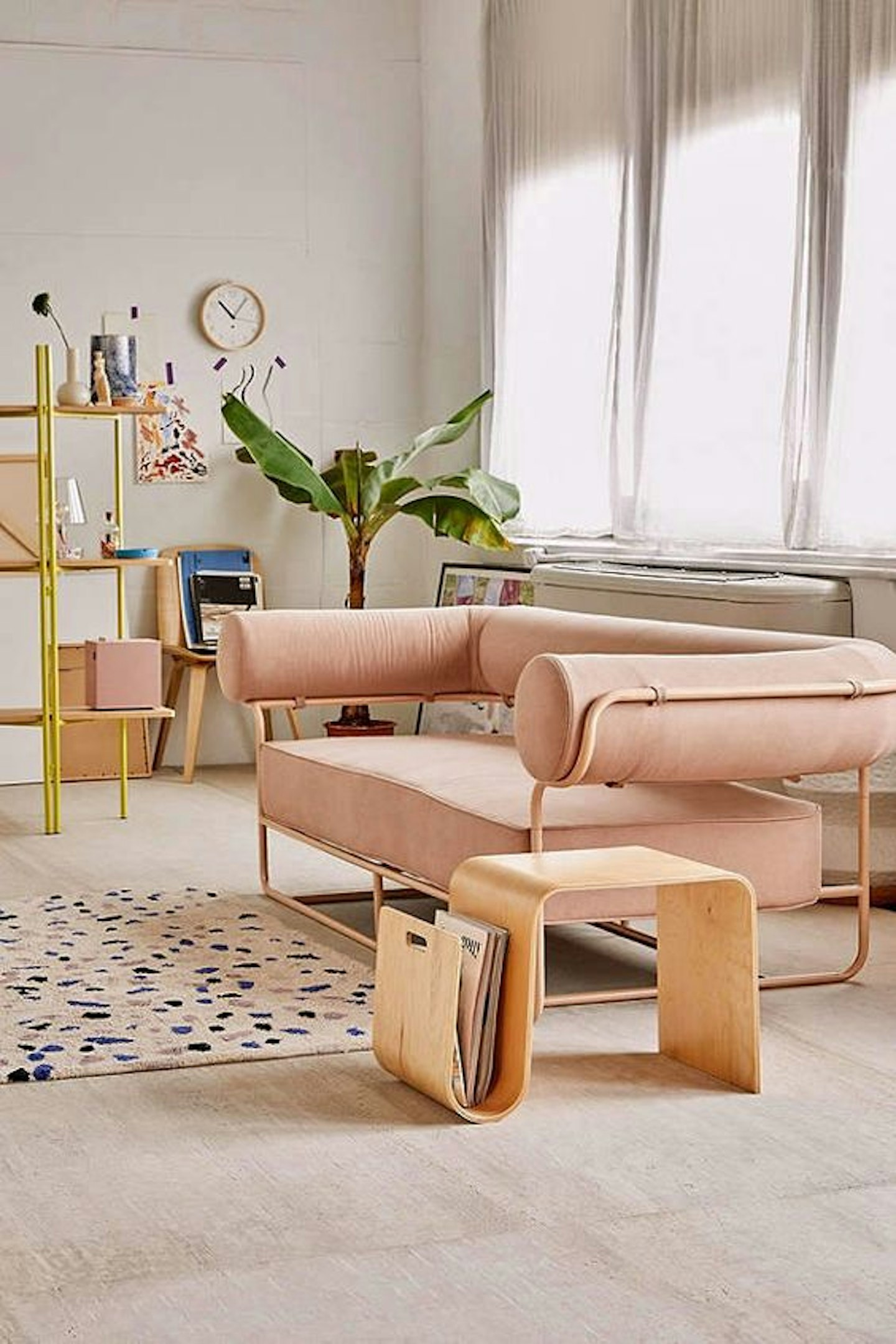 11 of 13
11 of 13pastel living room interiors inspiration
If a classic velvet sofa feels too traditional for your space, look out for pastel sofas in modern shapes like this one.
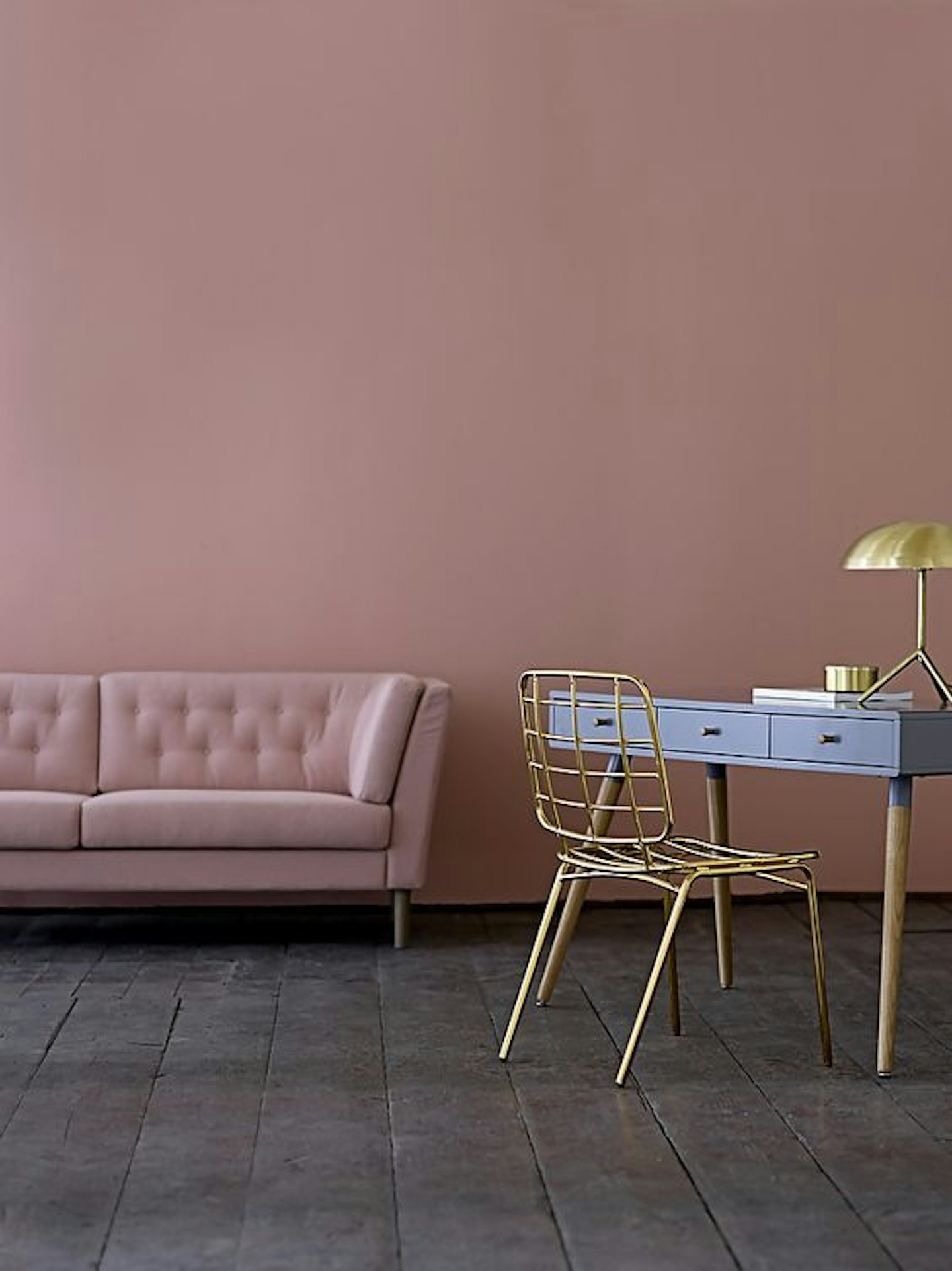 12 of 13
12 of 13pastel living room interiors inspiration
Metallic accents stand out against a millennial pink backdrop.
 13 of 13
13 of 13pastel living room interiors inspiration
We can't all live in a pink palazzo, but we can dream__ of recreating these dappled walls...
How to reupholster a dining chair seat
Want to get started? Lucy has provided step by step tips for re-upholstering a standard drop-in seat (that's the kind you'll see on a dining chair)...
-
Take out the seat from the chair frame. Remove the tacks or staples (they'll be on the underside) using a hammer or tack remover. You'll then be able to remove any old fabric.
-
If the chair is old, you might need to replace the filling - the padding that makes the seat soft. Take the old padding out, and place the seat base on your new upholstery foam.
-
Trace around the seat, so you leave the outline on your foam. Then, cut the shape out with a serrated knife.
-
Place the foam face down onto your wadding, and place the seat frame on top (also face down).
-
Fold the wadding up and over the underside of the seat, and trim - leaving about an inch and a half to staple to the underside of the frame.
-
Start by stapling the wadding to the middle of each rail of the frame, on all four sides. Then continue adding staples all the way round, pulling the wadding taut as you go. Leave all four corners until last - pull each corner tight into the middle and staple. Trim any excess wadding.
-
Place your fabric face down on a worktop. Put your seat, now covered in wadding, upside down on top of it. If you're using fabric with a pattern, make sure it's centred or lined up in the way you'd like it to look. Measure and mark three inches around the edge of the seat, and cut out the fabric.
-
Start by stapling the fabric to the underside of the seat. Then, run your hand along the top of the seat, to the rear - so you ensure the fabric is flat and tight. Then staple it to the underside of the back rail.
-
Continue this process, working your way out from the middle until you're a couple of inches away from each corner. Then repeat on the left and right hand rails. If the fabric doesn't feel tight enough, you can remove some of the staples to make adjustments.
-
Each corner can now be pulled tight and stapled. The simplest way to do this is to imagine you're wrapping the corner of a present, folding it so it looks neat.
-
Lastly, trim away any excess fabric and cover the underside of the seat with your bottom cloth, stapling it into place.
-
Drop the seat back into the frame, and your job is done!
Choosing a fabric
'When it comes to planning an upholstery project, pick a plain or semi-plain (such as Herringbone) fabric,' advises Martin Aveyard, creative director at Moon. 'This means that first time upholsterers won't have to worry about the art and maths behind pattern matching a more complicated design.' In terms of the weight and finish, he suggests 'choos[ing] a fabric which is durable and easy to work with; anything too delicate and you run the risk of rips and tears mid-job.'
WATCH NOW: WATCH NOW: An Exclusive Inside Look At The Making Of Chiara Ferragni’s Dior Couture Wedding Dress
